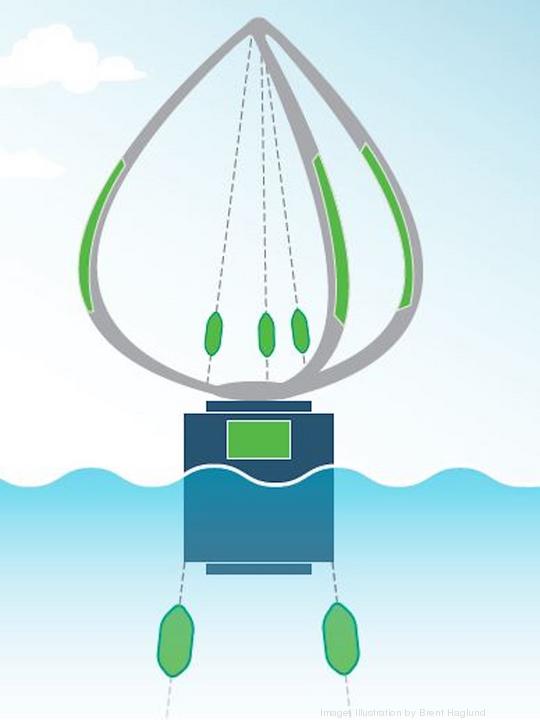Brandon Ennis, an offshore wind technical lead at Sandia Labs, designed a drastically new concept for offshore wind turbines.
Ennis’ design, which Albuquerque-based Sandia National Laboratories filed a patent application for in 2020, allows a wind turbine’s generator to be placed on a floating platform, rather than on the top of a 500-foot tower.
But in order to make that design work, Sandia Labs’ wind power group also had to develop a software tool that allows engineers to certify offshore wind turbines to the right design standards, factoring in the changing wind and sea conditions.
Ennis said in a statement, the floating, vertical-axis wind turbine industry can’t exist without the vertical-axis wind turbine design tool software.

Sandia National Laboratories’ design for offshore wind replaces the traditional vertical tower with tensioned cables that can be adjusted to the conditions.
Illustration by Brent Haglund
“To design our floating wind turbine system, we needed a design tool that can simulate the wind, waves, blade elasticity, platform motion and the controllers,” he said.
The software will now lead to the development of lighter and cheaper offshore wind turbines.
Because most of the offshore wind in the U.S. blows across water more than 200-feet deep, it’s cost prohibitive to build the rigid support structures found in traditional turbines.
The vertical-axis design also catches wind, and energy, from every direction. But that makes it hard to protect the turbine from damaging winds.
Sandia’s wind power group, they believe, solved this by replacing a vertical tower with tensioned cables that can be adjusted to the conditions.
“For us, the question becomes how do we remove mass and cost from the system while maximizing energy capture, which is where we got our innovative, towerless, vertical-axis design,” Ennis said.
The team at Sandia is planning to have a fully optimized design for the floating wind turbine by the end of the year.
The project’s development is supported by the U.S. Department of Energy’s Advanced Research Project Agency-Energy’s ATLANTIS program. The Sandia team is also working with partners at Sugar Land, Texas-based FPS Engineering & Technology and the Spring, Texas-based American Bureau of Shipping.
By Carter Jones

